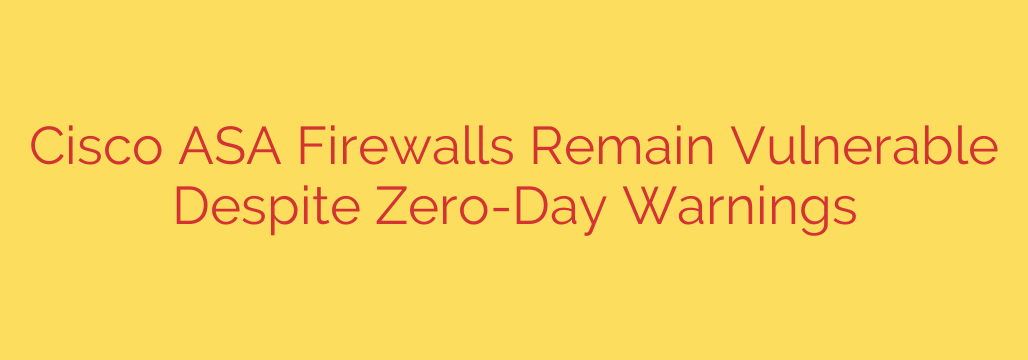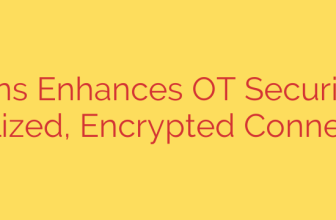
Urgent Security Alert: Unpatched Zero-Day Flaw Exposes Cisco ASA Firewalls
Cybersecurity teams are on high alert as a critical zero-day vulnerability in Cisco’s Adaptive Security Appliance (ASA) software is being actively exploited in the wild. This security flaw allows attackers to gain control of affected network devices, posing a significant threat to organizations worldwide. Despite initial warnings, many firewalls remain unpatched and exposed.
This is a developing situation that requires immediate attention from network administrators and IT security professionals. Understanding the nature of the threat and taking swift, decisive action is crucial to safeguarding your network infrastructure.
What is the Vulnerability?
The core of the issue lies within the web interface of Cisco ASA and Firepower Threat Defense (FTD) software. The vulnerability allows an unauthenticated, remote attacker to execute arbitrary code and gain full control over the device. This type of exploit is particularly dangerous because it does not require any user interaction or credentials, enabling attackers to strike silently and effectively.
Key aspects of this high-severity flaw include:
- Remote Code Execution (RCE): Attackers can run their own malicious code on your firewall.
- No Authentication Required: The exploit can be triggered by an external attacker with no prior access to the network.
- Full System Control: A successful attack could result in a complete compromise of the network device.
Attackers who successfully exploit this vulnerability can intercept, inspect, and modify network traffic, pivot to other internal systems, or cause a complete network outage through a persistent denial-of-service (DoS) attack.
Which Devices Are At Risk?
The vulnerability impacts Cisco devices running specific versions of ASA and FTD software where the web-based management interface is exposed to the internet. Any organization using the clientless SSL VPN feature may be particularly vulnerable.
You should consider your systems at high risk if they meet the following criteria:
- Running a vulnerable version of Cisco ASA or FTD software.
- The web interface is accessible from the internet or untrusted networks.
- Features like AnyConnect SSL VPN or clientless SSL VPN are enabled.
It is critical for administrators to immediately audit their device configurations to determine if they are exposed. Assuming your device is safe because it is behind another layer of security is a dangerous assumption.
Actionable Steps for Immediate Mitigation
While a permanent security patch is still in development, Cisco has provided official guidance and there are immediate actions you can take to protect your network. Do not wait for a patch to be released before taking action.
Identify Vulnerable Assets: First, create an inventory of all Cisco ASA and FTD devices in your environment. Check their software versions and configurations to determine which ones are potentially exposed.
Restrict Access to the Web Interface: The most effective immediate mitigation is to disable all access to the ASA/FTD web interface from the internet. If remote management is absolutely necessary, restrict it to a trusted internal IP address range or require users to connect through a secure VPN before accessing the management portal.
Monitor for Signs of Compromise: Proactively hunt for indicators of compromise (IoCs). Scrutinize device logs for any unusual activity, such as unexpected reboots, unauthorized configuration changes, or suspicious outbound connections. A sudden spike in CPU usage could also indicate malicious activity.
Prepare for Patch Deployment: Stay informed about the release of an official security patch from Cisco. Once available, it should be treated as an emergency update. Plan for immediate deployment across all affected devices to permanently close the security gap.
This ongoing threat underscores the importance of a defense-in-depth security posture. By limiting the exposure of management interfaces and maintaining vigilant monitoring, organizations can significantly reduce their risk while awaiting a permanent fix.
Source: https://www.helpnetsecurity.com/2025/10/01/too-many-cisco-asa-firewalls-still-unsecure-despite-zero-day-attack-alerts/








